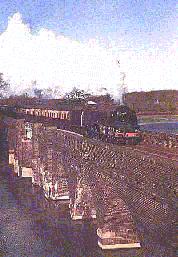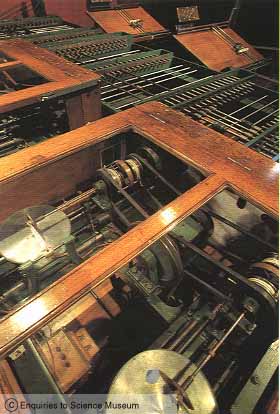

Jack's career after obtaining his PhD at Manchester comprised three stages:
He was reluctant to talk about any of these periods of work, so the information we have is limited. I shall give a brief summary of what we know.
The LMS Research Department at Derby was proposed in 1934, and Jack joined this new organisation in 1936. It would seem from the records that individuals were not identified in the reports of work carried out, but Jack did refer to one project, that of calculating when a large locomotive would leave the rails at speed. He emphasised the sense of relief when the locomotive on the test bed left the rails within 1% of his calculated value.

He maintained his interest in the railways - sharing a railways periodical with other staff.
His work with the LMS was interrupted by the war. He had volunteered for service, but was told he would be more useful as a backroom boy.
He then worked at Cilwendig in the Projectile Development Establishment under Professor Rosenhead with David Kendall, Maurice Bartlett and others, who later became leaders in their fields in the post war period.
He joined the Home Guard in derby and also severed in the Home Guard at Cilwendig; Joan tells me that he did not exactly enjoy this role.
His stay at the establishment in Cilwendig was followed in a short time by a request from Professor Douglas Hartree that he should join the Tube Alloys Project team in Manchester.

Hartree had developed a version of the Differential Analyser (part of it is on display in the Museum of Science and Industry in Manchester ) in 1935. Incidentally, Freddie Williams was an Assistant Lecturer at Manchester then and produced an automatic curve follower for the Hartree Differential Analyser.
The Manchester Differential Analyser was designed to solve differential equations. It was built by the Metropolitan-Vickers Electrical Company and completed in 1935 for the Physics Department at Manchester University. The machine was based on Vanevar Bush's original design and powered by electric motors. It used mechanical components to model mathematical relationships. The central device was a disc-and-wheel device integrator which performed mathematical integration.
Jack joined Tube Alloys to work under Professor Hartree. They used the Differential Analyser, carrying out some large scale computations for Rudolf Peierles and Klaus Fuchs - it was only recently that he said, with some pride, that he had made a significant contribution to the project finding an asymptotic solution to a critical equation. This work preceded the arrival of the 15-strong British team at Los Alamos in December 1944.
There is a paper at the Record Office, Kew, that Jack wrote in 1943, and I have a reference to this. In deference to Jack's wishes I have not pursued other sources in the Tube Alloys project reports.
(Others at Harwell who worked on the Tube Alloys Projected in Los Alamos included Tony Skyrme who joined Harwell as Head of the Nuclear Physics Group in 1950 and stayed until 1961. After the war, Egon Bresher returned to Britain and joined Harwell, first as head of the Chemistry Division, then from 1948 as head of the Nuclear Physics Division. He retired from Harwell in 1966. )
It is clear that the Differential Analyser was a powerful resource in those days - soon after the Manchester machine was installed a copy was made for Cambridge. Jack said that it was probably the most powerful calculating engine at the time.
At the end of the war he returned to work with LMS Research Department but soon afterwards he was recruited to work at Harwell.
Some more information on the use of the Differential Analyser was given in this note from 1994.